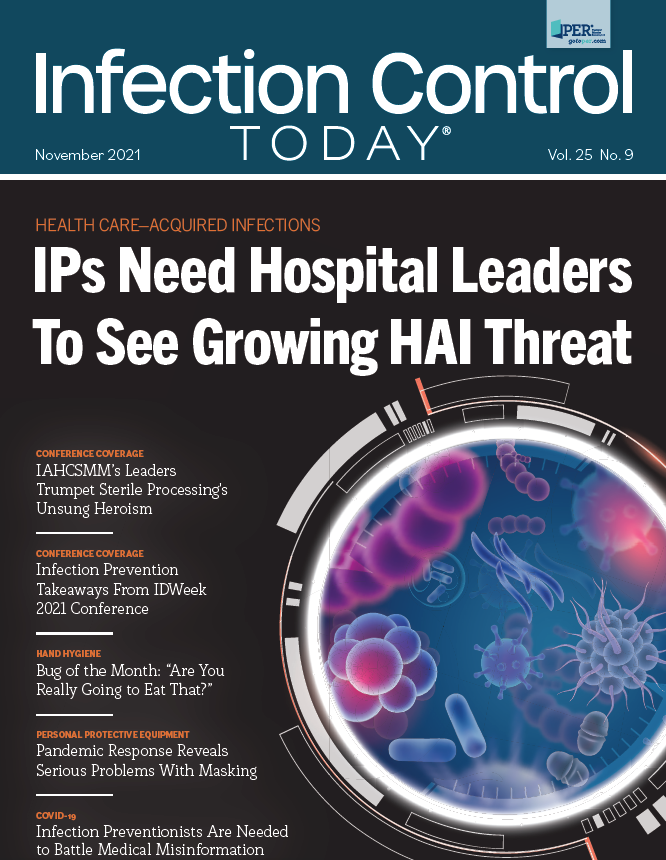Sepsis Sufferers Getting Antibiotics Quicker
Patients with abnormally low blood pressure were less likely to receive antibiotics even though they could benefit from such treatment, according to a recent study.
The faster that patients suffering from sepsis receive antibiotics, the better their chances for survival are. However, there still needs to be concern about possible adverse effects and contributing to antibiotic resistance, which could render the medications useless later.1 That was among the findings in a large cohort study published in JAMA Network Open, with another being that median time-to-antibiotics for sepsis declined by more than 9 minutes per year during the course of the study.2
Source: Centers for Disease Control and Prevention. A close view of the dorsal aspect of a patient’s right hand. Note the swelling and erythema, in the location of the fourth metacarpophalyngeal (MP) joint, which had been caused by a systemically disseminated gonococcal infection, referred to as gonococcal sepsis.

Investigators with the University of Michigan and the US Department of Veterans Affairs (VA) also found that there did not seem to be a standardized approach concerning when to administer antibiotics. The study included 111,385 hospitalizations for sepsis at 130 VA hospitals nationwide from 2013 to 2018. The primary outcome was time-to-antibiotics across study periods, hospitals, and patient subgroups based on presenting temperature and blood pressure.
“[Although] time-to-antibiotics declined overall and in nearly every hospital during the study, there remained more than 2-fold variation in median time-to-antibiotics in the most recent study years,” the study states. The variation remained even after investigators adjusted the data to account for different patient characteristics. “This may represent a potential opportunity for practice improvement going forward, but the benefits of further accelerating time-to-antibiotics must be balanced against the risk of driving antibiotic overuse in patients with noninfectious illness,” the study states.
A good place to start, the study indicates, would be better monitoring of patients with abnormally low blood pressure (hypotension). The study states that “time-to-antibiotics was faster for patients with fever and normal blood pressure than for patients without fever but with hypotension, suggesting that obvious signs of infection are a stronger trigger to prescribe antibiotics than shock or that competing treatments for patients with hypotension (eg, starting vasopressors) are prioritized before antibiotics, even though antibiotic delays are associated with greater mortality risk in patients with shock or hypotension.”
Most patients (68.7%) received their first dose of antibiotics in the emergency department. A total of 7574 patients (6.8%) died in the hospital, and longer time to antibiotics was associated with higher in-hospital mortality. A total of 13,855 patients (12.4%) died within 30 days of discharge.
The median time-to-antibiotics (adjusted for patient characteristics) declined by 9 minutes per calendar year but varied significantly between hospitals, with average time-to-antibiotics in the most recent period ranging from 3.1 to 6.7 hours. Overall, the unadjusted median time-to-antibiotics decreased from 4.5 hours in the first year of the study to 3.5 hours in the most recent year.
Max Wayne, MD, fellow in pulmonary and critical care medicine at the University of Michigan, told Infection Control Today®’s sister publication Contagion® that “our findings suggest that patients with more obvious signs of infection get antibiotics faster. However, it is important to be cognizant that some patients with subtle findings can nonetheless still be very sick due to infection and warrant early antibiotics.”3
The study also states that “slope of change over time varied across hospitals in this initiative, resulting in a growing disparity in time-to-antibiotics by race as hospitals treating higher proportions of Black patients experienced less decrease over time.”
For patients in hospitals with faster time-to-antibiotics, the odds of receiving antibiotics within 3 hours increase by 65%. Median time-to-antibiotics during the most recent year of the study (3.9 hours) varied depending on presenting characteristics. Wayne said that “fever seemed to be a stronger driver of rapid antibiotics than low blood pressure.”
A version of this article originally appeared in Contagion®.
References:
- Diamond F. Gathering storm: future without antibiotics is coming at us. Infection Control Today®. July 9, 2021. Accessed September 28, 2021. https://www.infectioncontroltoday.com/view/gathering-storm-future-without-antibiotics-is-coming-at-us
- Wayne MT, Seelye S, Molling D, et al. Temporal trends and hospital variation in time-to-antibiotics among veterans hospitalized with sepsis. JAMA Netw Open. 2021;4(9):e2123950. doi:10.1001/jamanetworkopen.2021.23950
- Lorenz J. Average time-to-antibiotics decreased for veterans hospitalized with sepsis. Contagion®. September 16, 2021. Accessed September 28, 2021. https://www.contagionlive.com/view/average-time-to-antibiotics-decreased-over-time-for-veterans-hospitalized-with-sepsis?fbclid=IwAR31pj8axzFNE1x4D-jqndUU4cmsOFNMVJ1_htpS3fbIpzg2pYVo-4obZ7o

Breaking Barriers: The Future of HIV Prevention and the Fight for Widespread PrEP Access
January 31st 2025Despite medical advances, HIV prevention faces roadblocks—low PrEP adoption, stigma, and accessibility issues threaten progress. Experts push for innovative, long-acting solutions to end the epidemic.
The Hidden Dangers of Hospital Ventilation: Are We Spreading Viruses Further?
January 31st 2025New research reveals hospital ventilation and air purifiers may unintentionally spread viral particles, increasing infection risks. Infection preventionists must rethink airflow strategies to protect patients and staff.
Clean Hospitals With Alexandra Peters, PhD: The Double-Edged Sword of High-Tech
January 30th 2025Despite revolutionary advancements like alcohol-based hand rubs, infection prevention still faces major hurdles. Poor adherence to hygiene, overreliance on technology, and understaffed environmental services create perfect storm conditions for deadly outbreaks.